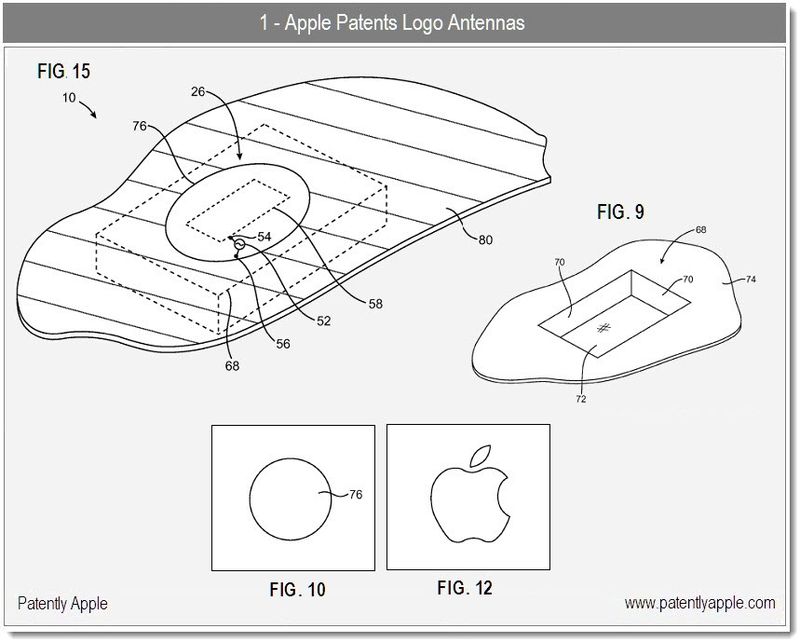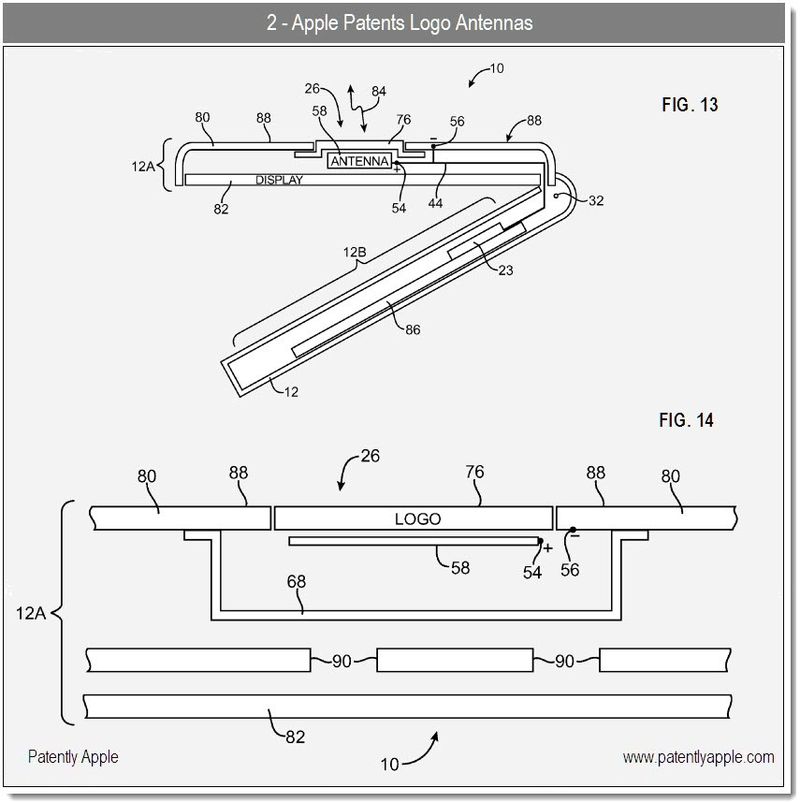Apple Plans To Hide The Antenna Behind Their Logo
Apple engineers are always hard at work trying to better their hardware, trying to find every route possible to make it more interesting, usable, and effective. While "Antennagate" may have thrown a wrench in a lot of people's planning and hard work, and caused an antenna-related campaign of which no one had seen before, it also meant that those same engineers were already hard at work on a fix right after the launch of the latest generation iPhone. And, if a recent patent application is any indicator to the fact, they may have found a potential fix for the whole situation: hiding it behind the logo.
Apple is calling it the "logo antenna," and it's right where you think it is. The patent (which, as mentioned above, is an application at this point) is clear in pointing out that the logo antenna isn't just for an iPhone, either. As you can see in the image above, they make it very clear that they could put the same technology into their laptop line-up, or "telephonic" MacBooks. Patently Apple points out that this is the third time Apple has patented a telephonic MacBook, and suggests that this is an obvious trend, which Apple is focusing on for a reason. It's also not surprising that Apple is already planning on using this same technology, if not better variations of it, and putting the logo antenna in even smaller devices, like something you can wear.
According to PA, the new technology could use a housing that is machined from an aluminum block –or other metals– that service as conductive sidewalls. The housing could then be used to hold wiring, displays, and other integrated circuits. The hope is that the new logo antenna will allow the device to "gain a stronger signal without intervening metal or other conductive housing walls interfering." It's not a secret that as our gadgets get smaller and thinner, it is becoming more difficult for engineers to put antennas into them. But this new design, with that aforementioned conductive housing, or "conductive antenna cavity," could mean a huge transition in antenna technology.
[via Patently Apple]



